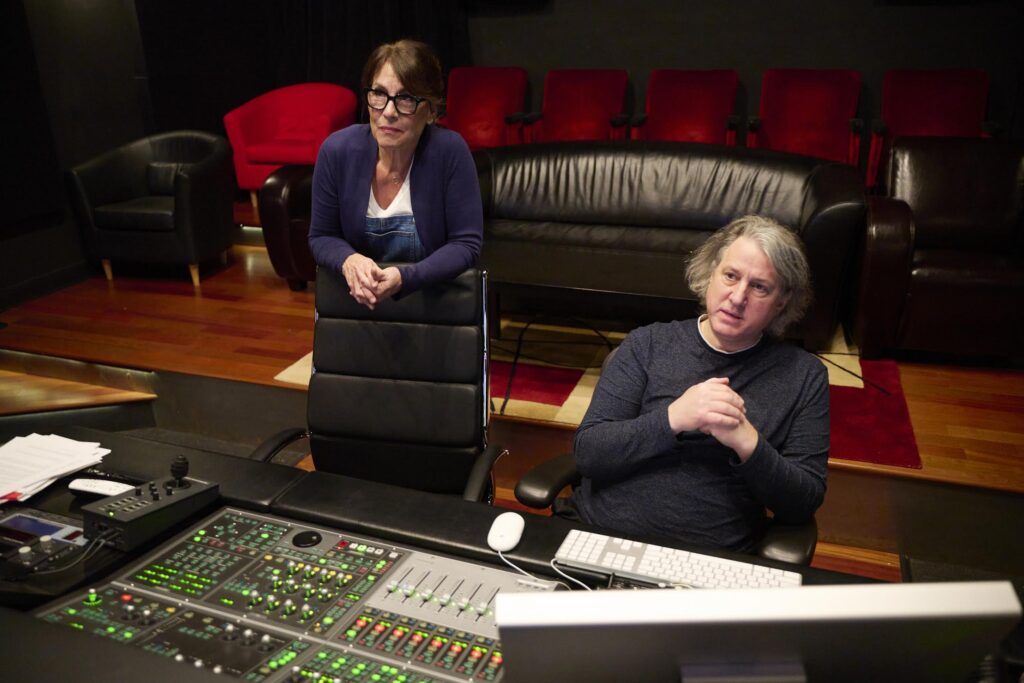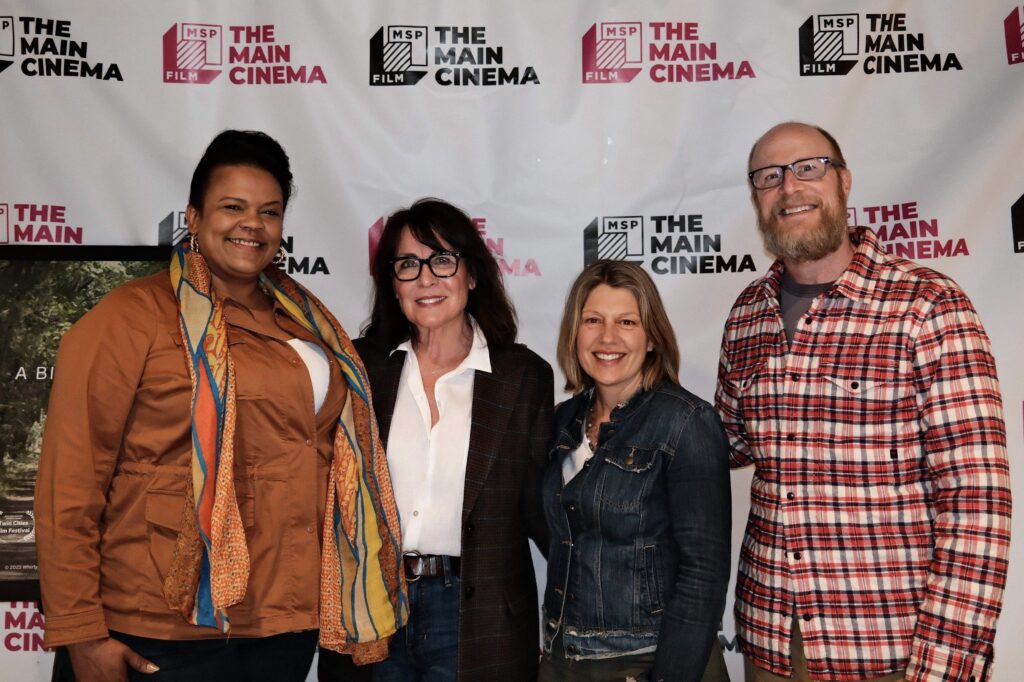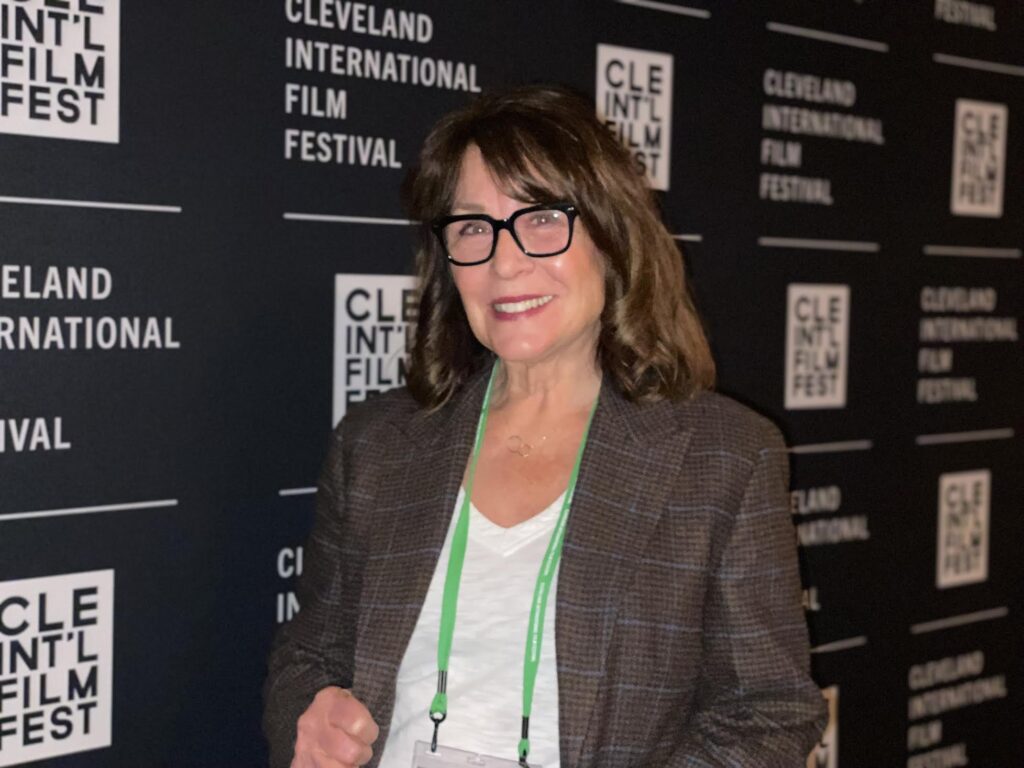Writer Will Bjarnar interviews Louise Woehrle, director of A Binding Truth. Will also reviewed the film here.
Will Bjarnar: How did you first come across Jimmie and De’s story?
Louise Woehrle: I was in New York screening my previous film, Stalag Luft III—One Man’s Story. My two cousins from Charlotte attended. My cousin Katie, who is married to De, one of the main subjects of the film, asked me what my next project might be. I said I really didn’t know but that I had a few ideas. She said, “What about the Jimmie Lee and De story?” I knew very little about their story at the time. I met Jimmie at Katie’s daughter’s wedding, and De told me how he and Jimmie got together and about the Charlotte Observer series about Jimmie back in 2013.

WB: Both men are incredibly forthcoming in the documentary; their openness and comfort, both with this subject and each other, is refreshing. Was that the case from the moment you approached them with the project? How collaborative was the process?
LW: That’s an interesting question because I really didn’t approach them. It was my cousin Katie’s suggestion that we consider the idea. When we met to discuss the potential of doing a documentary, Jimmie and De were very open to it. They were forthcoming during the interview process, which led to their providing me with archival documents, photos, etc. They also introduced me to Gary Schwab, the journalist at the Charlotte Observer who did the original story. Gary was a goldmine of information and a consultant on the project. What impressed me was they were both willing to show up fully for this story and that was a gift. Establishing a relationship with each of them was wonderful and it did not take long for them to drop in and forget the cameras were there.
WB: When it comes to preparation and storytelling, respectively, what was your “order of operations,” if you will, with this particular project?
LW: I like how you ask this question because there is a process for me when starting a project. In this case, I read the series of articles about Jimmie and De’s story in the Charlotte Observer from 2013 and 2014 to get a lay of the land, so to speak. I brought Gary Schwab in early as a consultant to pick his brain because he had written those articles for the Charlotte Observer. Simultaneously, I needed to raise money for the project, and thankfully, my executive producer from Minnesota, Jay Strommen, was all in and said he would front the start-up capital to get the project going. A friend of De’s in Charlotte, Jock Tonissen, wanted to help, so he arranged a luncheon to get local funders interested. Next, I set up a way for people to donate through a nonprofit, FilmNorth, in St. Paul, MN, which I have utilized as a fiscal sponsor for several projects. I live in the Minneapolis/St. Paul area. After I initially interviewed Jimmie and De and filmed them in a few locals in Charlotte, we edited what I call a sizzle reel to show a brief overview of Jimmie and De’s story. Thankfully, we received a lot of support from the Charlotte community, and a fundraising campaign was initiated by businessman Chuck Hood. I needed to hire a production team and lucked out when I found my Director of Photography, Scott Gardner, based in Charlotte. I also found advisors in the Black film production community as advisors. A Black lens on the project was very important to me, and I was fortunate to connect with Lewis Erskine (Freedom Riders, The Birth of Cool), a highly regarded editor in New York, who came on board as one of our advisors before he passed away. Lewis was a great loss to the documentary community.
WB: I found it interesting how though the documentary’s central focus is on Jimmie and De’s discovery, it also goes into great detail about the challenges Jimmie faced as a Black athlete in 1960’s North Carolina. How much of a priority was it to weave these two narratives together
while still primarily attending to your main subject matter?
LW: It was very important to weave the 1960s story of segregation, racism, and civil rights into the film because it gives important context to Jimmie’s story and the struggles that were happening for Blacks during that time. We can’t fully know who we are if we don’t know our history. That’s definitely a theme in our film.

WB: I read that there is a longer cut of the film than the one viewers are likely seeing now, one that you fittingly showed in Charlotte? I’m curious, what was removed from that longer cut and why?
LW: We cut scenes and interviews that did not necessarily move the story forward, but were certainly solid sequences. It’s tough cutting scenes and surgically removing parts of scenes to economize the story, but in doing so, it did make the film better. One scene we cut was between Jimmie and his good friend and fellow teammate Neb Hayden, the star quarterback on the Myers Park team. It showed them walking on the Myers Park High School campus, talking about the good old days, and laughing. I loved that sequence. An interview section we cut was a Pastor, who is White, talking about racism and how White people need to look into their own hearts and minds and address this issue. As much as I loved what he said so eloquently, De said it in the film, which was the right choice. We didn’t need it said twice.
WB: You’ve made a number of films over the better part of 20 years, and many seem to have this throughline of found family or found community. How does A Binding Truth fit into that thematic focus, as well as differ?
LW: Wow, you do your homework. Thanks for that. My mission statement has been the same for over 20 years: Telling stories that help us see ourselves and others in new ways, promote healing, and connect us as human beings. No film exemplifies that better than A Binding Truth. The common thread is our humanity and willingness to look at ourselves first and discover what we can do to shift or see things in a new light. Jimmie and De exemplify this and have personally witnessed that they and the film are serving as a catalyst for meaningful conversation about race and the truth of Slavery that leads to understanding, new awareness, healing, and moving the needle forward.
WB: This story is obviously rooted in the South, but your film cuts no corners when it comes to noting that this is also very much America’s story. Was that a clear point of emphasis from start, or did that come more from Jimmie and De’s testimonies throughout your interview
process?
LW: This is a good question. Although racism is everywhere, I initially looked at this story as a Southern Story, but the more immersed I became in the journey of both men’s stories, I realized that everything that happened in the South also happened in the North with discrimination, redlining, lynchings, Black Veterans coming back from war not able to get a loan to purchase a home, and the list goes on and on. I know for me, learning more about Slavery from De and Jimmie and our historians shed a brighter light on white privilege and the foundation of white supremacy and racism.

WB: I wrote in my review that the film is academic but still intimate, not a delicate balance many documentaries of this nature are able to strike. How important is that tone to you from a filmmaking perspective, the ability to teach audiences something while also
making them feel something?
LW: Thank you so much for acknowledging the delicate balance between feeling something, while learning. I take your comment and question as a great compliment as a filmmaker. This is key for me as a storyteller. I have always trusted the intelligence of my audience. I know that I learn best when there is a story involved. When we feel something, we are more open to the truth, which was my hope for this film – to tell the truth from Jimmie and De’s perspective and others who show up in our story. It’s authenticity that rings true, so learning is a byproduct. Storytelling is a powerful tool for learning and understanding ourselves and others better.
WB: Do you know what your next project is, and if so, can you tell us anything about it?
LW: I have not started my next project yet because I’m still so involved in the roll-out of this film, developing a workshop with Bob Johnson, Learning From the Future and Viewers’ Guide, written by Queens University of Charlotte that will serve schools, churches, organizations, and whoever wants to set the table for meaningful conversation about race and the truth of our Slave history in America. I’m also in the process of creating awareness about my previous documentary, Stalag Luft III – One Man’s Story, the story of my Uncle who flew in the Mighty Eighth during WWII, was shot down, and spent two long years as a prisoner of war in Stalag Luft, III. His personal first-person story parallels the series “Masters of the Air” on Apple TV, and is gaining more interest because of the series.
You can learn more at whirlygigproductions.com





